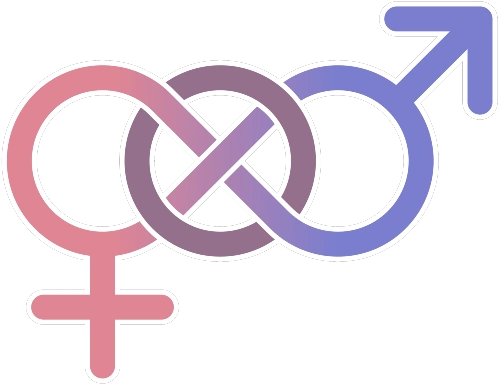No edit summary Tags: Visual edit Mobile edit |
No edit summary Tags: Visual edit Mobile edit |
||
| Line 1: | Line 1: | ||
| − | {{Flags|title1 = Bi Pride Flag|image1 = Bisexual flagCDD64873-0867-40D0-8613-90C813FE412D.png}}'''Bisexuality''' is the romantic and sexual attraction |
+ | {{Flags|title1 = Bi Pride Flag|image1 = Bisexual flagCDD64873-0867-40D0-8613-90C813FE412D.png}}'''Bisexuality''' is the romantic and/or sexual attraction towards two or more genders. Despite the ''bi-'' prefix, bisexuality has also been defined as romantic or sexual attraction to people of any sex or gender identity for over fifty years (1960s). The definition is more akin to ''[https://sexuality.fandom.com/wiki/Pansexuality pansexual]'', which was coined in [https://i-am-pansexual.livejournal.com/2002/06/13/ 2002] |
| + | |||
| + | |||
Revision as of 21:01, 16 December 2020
Bisexuality is the romantic and/or sexual attraction towards two or more genders. Despite the bi- prefix, bisexuality has also been defined as romantic or sexual attraction to people of any sex or gender identity for over fifty years (1960s). The definition is more akin to pansexual, which was coined in 2002
The Bisexual Pride Day, or Bi Visibility Day, is celebrated on the 23rd of September.
The Flag
Revealed on December 5th 1998, the bisexual flag was designed by Michael Page to represent and validate bisexuals in the LGBT community and wider society. The flag depicts three coloured horizontal stripes with the middle slightly narrower
Page describes the meaning of the three colours as follows: "The pink color represents sexual attraction to the same sex, blue represents sexual attraction to the opposite sex, and the resultant overlap color purple represents sexual attraction across the gender spectrum." He also describes the flag's meaning in deeper terms, stating "The key to understanding the symbolism of the Bisexual pride flag is to know that the purple pixels of color blend unnoticeably into both the pink and blue, just as in the 'real world,' where bi people blend unnoticeably into both the gay/lesbian and straight communities."
Misconceptions
Like other LGBT identities, there are multiple misconceptions about bisexuality, including (but not limited to):
- Bisexuality being conflated with promiscuity or polyamory
- Bisexuality being called "half gay" and "half straight"
- Bisexuals being seen as greedy, or not able to pick a side
- Bisexuals being seen as unfaithful to their partner/s because of their sexuality
- Bisexuals being seen as sexually confused or frustrated
- Bisexuals being seen as transphobic
- Bisexuals only being attracted to binary genders, or being exclusive of non-binary identities.
These misconceptions often lead to the practices of biphobia and bisexual erasure, where evidence of bisexuality is ignored, removed. falsified or reexplained within cultural, historical or media sources. In its most extreme form, bisexual erasure includes denying that bisexuality exists. Despite this, there is increasing inclusion and visibility of bisexuals, particularly in the LGBT community.
History
There is a lot of bisexual history that can be viewed in both ancient cultures and modern history. The modern definition of bisexuality first took form in the 19th century. The first usage of the word "bisexual", in the sense of being sexually attracted to both women and men, was by Charles Gilbert Chaddock in his translation of Krafft-Ebing's work Psychopathia Sexualis in 1892. Prior to Krafft-Ebing, "bisexual" was usually used to mean having both female and male parts as in hermaphroditic or monoicous plants, or to mean inclusive of both males and females as in the sense of mixed-sex education.
Beginning from the 1970s, bisexuality as a distinct sexuality gained visibility in Western literature, academia, and activism. Although there is a surge of research and activism in bisexuality, many scholars and activists state that bisexuals have often been marginalized in literature, films, and research works.
